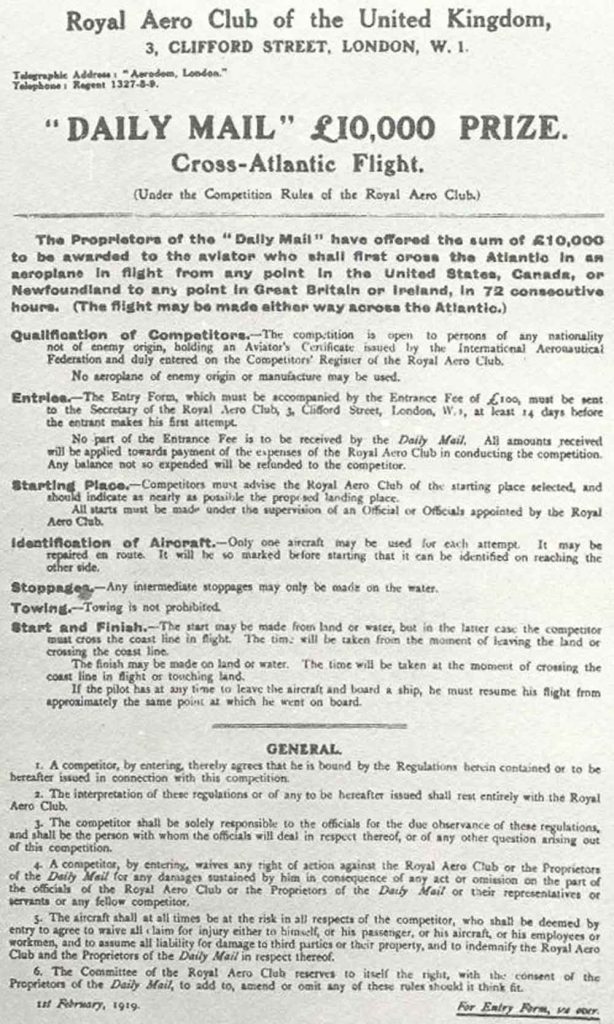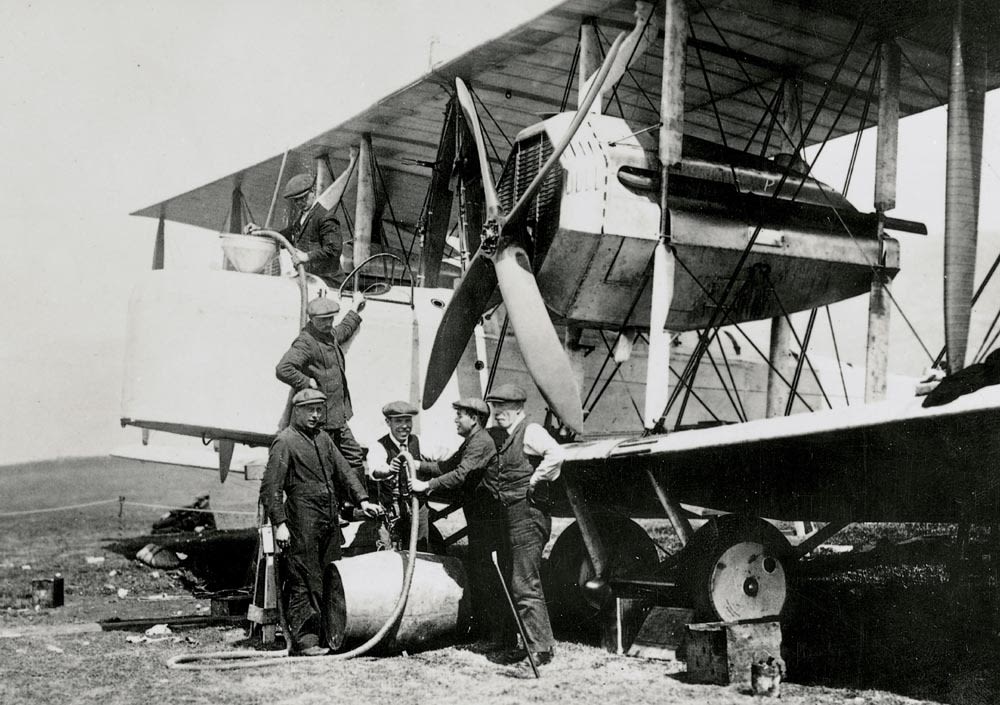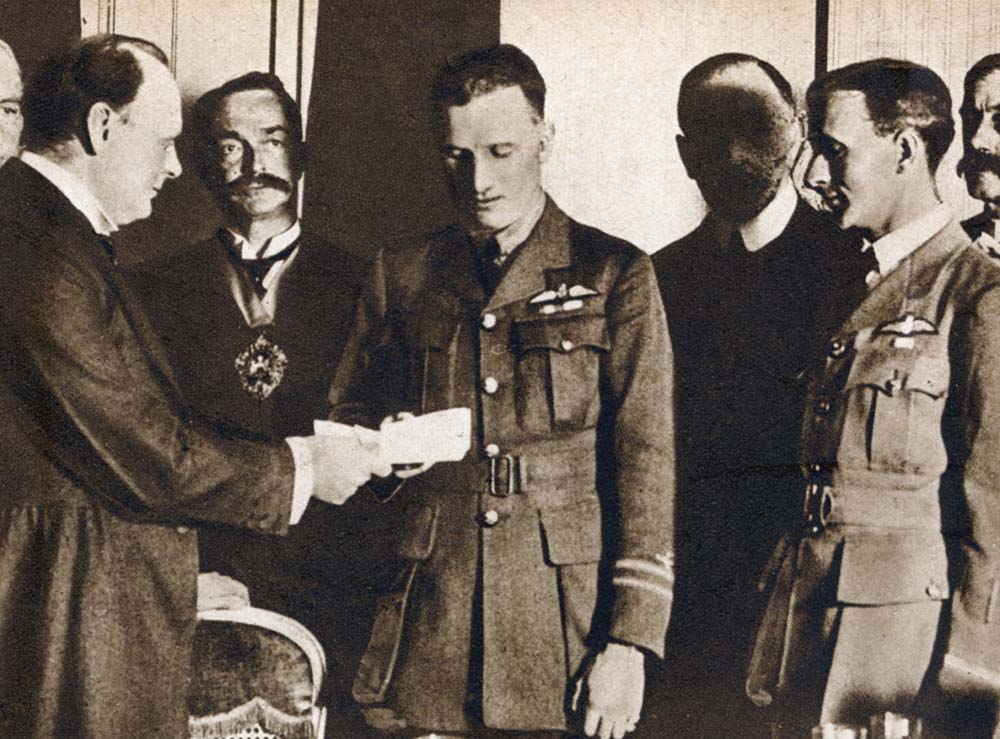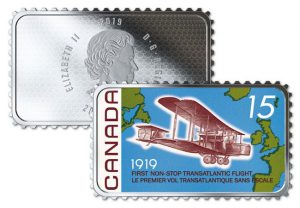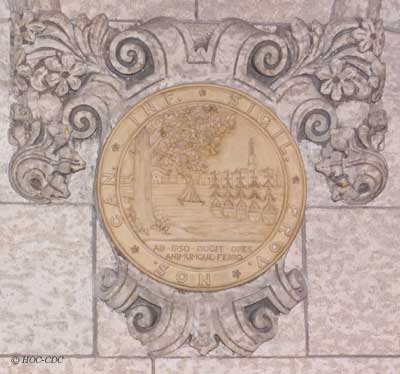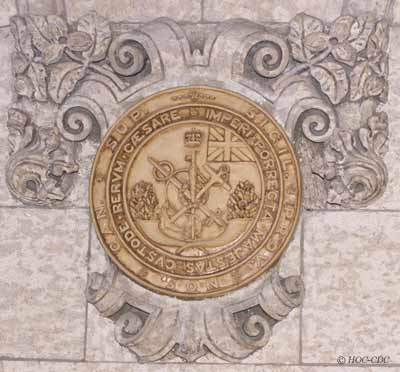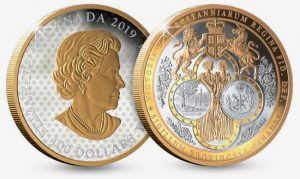Posts Tagged ‘Royal Canadian Mint’
How a £10,000 reward led to one of the greatest advancements in aviation
In the 1800’s, when aeroplanes were a mere twinkle in the eye of ambitious engineers, the idea of transatlantic flight came about with the advent of the hot air balloon. But one crash-landing, and one postponement due to the American Civil War meant this dream had to go back to the drawing board.
On the other side of the pond, in April of 1913 The Daily Mail newspaper offered a cash prize of £10,000 to “the aviator who shall first cross the Atlantic in an aeroplane in flight from any point in the United States of America, Canada or Newfoundland and any point in Great Britain or Ireland in 72 continuous hours”.
But it wasn’t until after the end of WWII that transatlantic flight by aircraft became truly viable, thanks to the significant advancements in aerial capabilities and technology.
Then the competition really heated up…
Nail-biting four-way competition
What came was a nail-biting four-way contest against the clock as well as each other. Four different ‘teams’ formed and went to work to try and prepare their chosen aircraft the fastest, for fear of being pipped to the post by another team making their attempt sooner. To make it a fair contest, each team had to ship their aircraft to Newfoundland for the take-off.

First to try was Australian pilot Harry Hawker and navigator Kenneth Mackenzie Grieve, piloting a Sopwith Atlantic – an experimental British long-range aircraft. In flight the aircraft suffered from engine failure and, when coupled with poor weather conditions, the decision was made to abort the mission.
The aircraft was abandoned in the Atlantic Ocean, 750 miles from Ireland, and the pair were rescued by a Danish steamer SS Mary. Due to the SS Mary not having any radio contact, the pair were presumed dead and King George V sent a telegram of condolence, but luckily this wasn’t the case as the pair arrived back on land nearly a week later.
The next attempt wasn’t nearly as exciting, as the aircraft never left the take-off zone. Frederick Raynham and C. W. F. Morgan made the attempt in a Martinsyde but crashed on take-off due to the heavy fuel load.
Then came the turn of aviator duo, John Alcock and Arthur Brown, who flew straight into the history books on June 15th 1919…
Flying in to the unknown across the Atlantic
The Vickers engineering and aviation firm, which had considered entering its Vickers Vimy IV twin-engine bomber in the competition, appointed Alcock as the team’s pilot along with Brown who was adept at long-distance navigation.
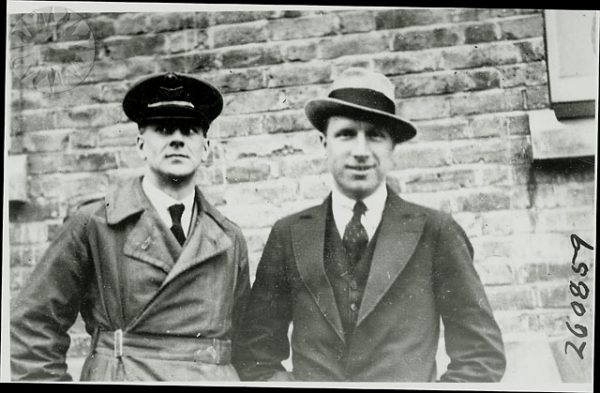
In preparation for the transatlantic flight, The Vimy, powered by two Rolls-Royce Eagle 360 hp engines, was successfully converted, including replacing its bomb racks with extra petrol tanks.
The pair took off from St. John’s, Newfoundland, in their modified bomber around 1:45pm on 14th June 1919. To say it wasn’t an easy flight would be an understatement. They encountered both mechanical and natural challenges. The wind-powered generator failed, depriving them of radio contact and much needed heating in their open-top cockpit. Fog and a snowstorm prevented navigation, almost resulting in a crash-landing at sea, not to mention the snow and freezing conditions meant the engines were in danger of icing up.
Whilst they were set a 72-hour target by The Daily Mail, the duo made landfall in Clifden, County Galway, in Ireland at 8:40am on 15th June 1919 – after just 16 hours of flight!
Incredibly, they landed not far from their intended landing zone in Ireland. However, the aircraft was damaged upon arrival because what looked like a field from their aerial view turned out to be a bog, causing the aircraft to nose-over. Thankfully neither were hurt, and Brown claimed that if the weather had been good, they’d have been able to continue to London.
A hero’s return to a £10,000 reward
Alcock and Brown’s successful attempt meant that the fourth team, Handley Page Limited, who were yet to take-off, were no longer eligible to compete. The two airmen returned home as aviation heroes and pioneers of the sky.
As promised, Alcock and Brown were rewarded for their ground-breaking achievement – the £10,000 prize money offered by The Daily Mail, for the first crossing of the Atlantic in less than 72 consecutive hours.
The Secretary of State for Air at the time, Winston Churchill, presented the pair with their cash reward. Then one week later, at Windsor Castle, they were awarded the honour of Knight Commander of the Most Excellent Order of the British Empire by King George V.
If you’re interested…
The Royal Canadian Mint marked the milestone 100th anniversary of this remarkable achievement and feat of engineering with a limited edition 1oz Silver Proof coin. The coin features a faithful colour reproduction of the commemorative stamp that was issued to mark the 50th anniversary.
Unsurprisingly the coin proved so popular that it is no longer available at the Mint! We have a limited number remaining, click here for more information >>
The Great Significance of Great Seals
Everyday we’re inundated with symbols and logos, and many of them pass us by. Be it on an advert at a bus stop, on our favourite brand of coffee, or even the Westminster Collection logo that was at the top of this blog. They’re everywhere. And even if we do pay attention to them, we don’t necessarily stop and think what it symbolises – I know I’m certainly guilty of this.
But there’s perhaps nothing quite as symbolic as a nation’s Great Seal – and they’re fascinating to boot! Great seals have been around since the Middle Ages, and typically feature a nation’s coat of arms or an allegorical image, as was common practice during this era to embody political entities like countries or provinces as a Grecian-style female figure.
In centuries when few people could read or write, the seal provided a pictorial expression of state approval which all could understand. They’re used as a guarantee of the most important and solemn records and documents, such as laws and treaties.
Generally speaking, the design of a Great Seal rarely changes, only after the ascension of a monarch. It is the one thing that connects all heads of state to their predecessors and those yet to come; an eternal bond.
But a delve into the Canadian archives shows us that the Great Seal of Canada has had several incarnations, and not just to mark a new head of state. Instead, each one marks a significant moment in Canadian history.
One of the most important iterations of the seal is the Great Seal of the Province that was used from 1841 to 1867. This seal is seen to mark one of the most important changes in Canada’s history – let’s take a look…
The Great Seal of the Province of Canada
In 1841 the two major British colonies of Lower and Upper Canada, now Quebec and Ontario respectively, were brought together under a single government and economy for the first time.
It was Canada’s first move toward responsible government and, according to the Canadian Encyclopaedia, was a “26-year experiment in Anglophone-Francophone political cooperation.”
Before the merger, Lower and Upper Canada had their own individual seals. To solidify the merge a new seal was created by placing the two existing seals side by side, held together by two allegorical figures with their arms around each other’s shoulders marking the unity of the two colonies.
To complete the design, the Royal Arms of the ruling monarch of the time, Queen Victoria, was incorporated over the top of the entire scene.
Steeped in symbolism
Importantly, every element in the detailed design was symbolic. Representing unity and Canada’s ties to Great Britain, some of the key elements include:
- Lower Canada seal: engraved by Thomas Major in 1793, it depicts a graceful oak tree on the bank of a river overlooking several ships at anchor, with a typical Quebecois town featuring a church steeple in the background.
- Upper Canada seal: originally designed in 1792 it features a peace-pipe crossed with a sword and an anchor, bound by an olive crown. The Union Jack is visible in the upper right-hand corner, alongside the royal crown.
- The royal arms of Queen Victoria: Victoria’s shield, held up by the lion (England) and the unicorn (Scotland).
- Two allegorical figures: two figures embrace each other with one hand while holding up the seals of Upper and Lower Canada with the other, symbolising the coming together of the colonies.
- Floral ornamentations: the seal is decorated throughout with the Scottish thistle, English rose, and Irish shamrock.

If there was any doubt as to how important this seal is and what it represents to Canada in terms of its history and heritage, then look no further than Canadian Parliament. Here you’ll find two original limestone carvings of the Great Seal of Province – a permanent reminder of the historic union of Lower and Upper Canada.
If you’re interested…
The Royal Canadian Mint is known for being fiercely proud of their country’s history, consequently their most significant issue of 2019 featured the Great Seal of the Province of Canada.
Expertly struck from ten full ounces of the finest .9999 silver with gold plating to a flawless proof finish this coin really has to be seen to be believed. And because of the impressive 76mm diameter you can appreciate every minute detail of the faithful reproduction of the Great Seal.
Just 900 coins were issued worldwide and it completely sold out at the Mint. We have a few of these masterful coins remaining, click here for more information >>
The NEVER-SEEN-BEFORE coins of Canada’s numismatic past…
For decades they’ve been the coins that Canadian public never knew about – a hidden secret in Canada’s numismatic past.
But, now they’ve resurfaced and finally made it onto coins as they were originally destined to do.
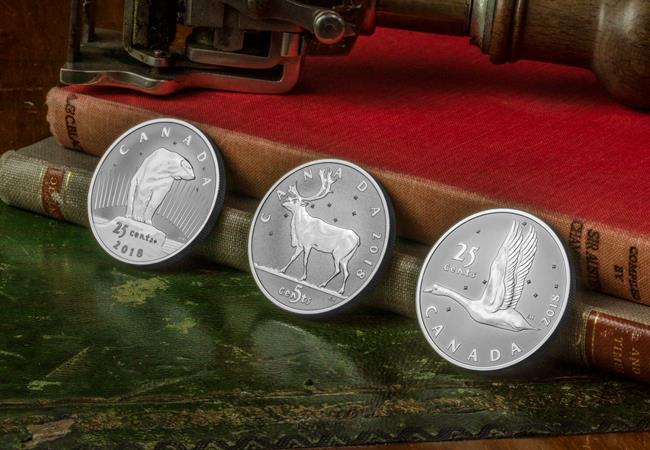
A currency overhaul…
In January 1936, the death of King George V meant that all of Canada’s coins needed new obverse designs; this was the perfect opportunity to update the reverse of all but the dollar coin, too.
A committee was formed and 12 Canadian artists were invited to submit sketches for new circulation coins. The artists were given broad artistic freedom, although suggested themes included Canadian flora and fauna, or scenes highlighting agriculture and industry.
Initial submissions were all rejected, including designs submitted by the designer Emanuel Hahn. It seems his images were dismissed because they did not dispel the view of Canada as a northern wilderness.
Hahn’s three coins never made it onto circulation coinage, but are now considered some of the most beautiful designs in Canada’s history:
25-Cent Polar Bear
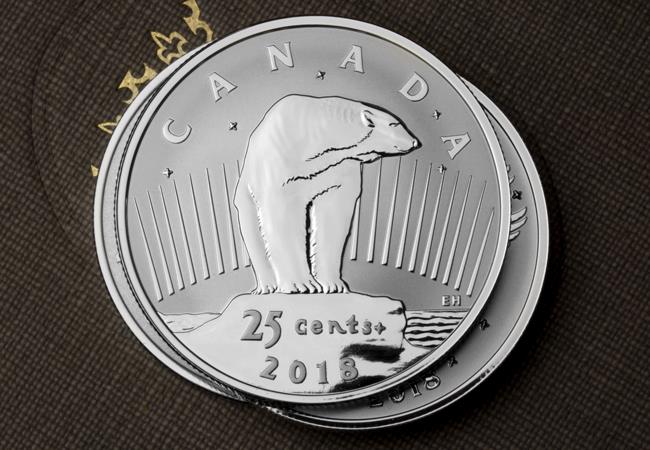
The first 25-cent coin design features a polar bear standing on an ice floe, its head turned toward the right side of the coin, while the open sea is visible behind the mound. A stylistic representation of the Aurora Borealis hangs over the low horizon and stretches across the northern sky, only yielding to the Big Dipper asterism that is a common element on all three coins.
25-Cent Goose
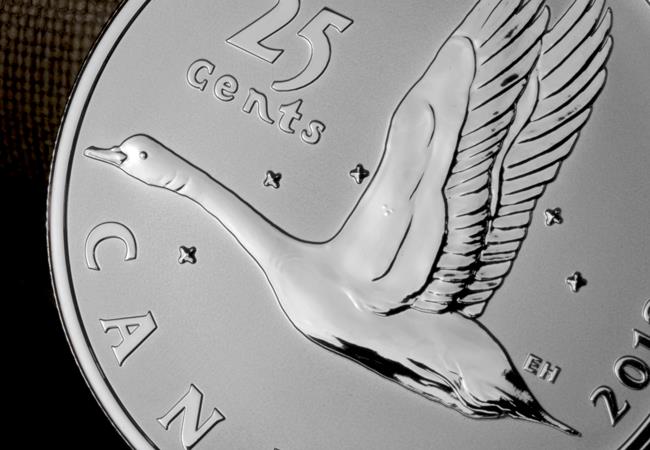
The diamond-like stars are more prominent in the second 25-cent coin design, which centres on a goose in flight. The side-profile view allows for the inclusion of several details, including the flight feathers along the outstretched wings.
5-Cent Caribou
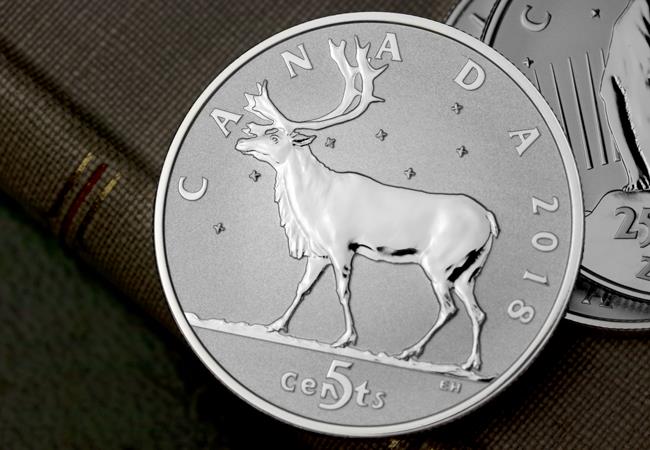
The five-cent coin’s reverse has a remarkable tie to the present: it is Hahn’s original caribou design, the precursor to the one now synonymous with Canada’s 25-cent circulation coin. Viewed in side profile, the ungulate moves beneath the night sky, where the Big Dipper is clearly visible.
The NEVER-SEEN-BEFORE coins, now reimagined…

None of the coins made it into circulation, but they have now been brought to coins for the FIRST TIME by the Royal Canadian Mint as part of a special limited edition Silver Proof set.
The fact that none of these coin designs ever entered circulation makes this set a very unique and special piece of numismatic history – so it’s no surprise that these fascinating coins SOLD OUT at the Mint in a flash.
If you’re interested…
We still have a limited number of these special sets available for UK collectors. But considering how quickly they sold out at the Mint, we don’t expect this stock to be available for long… Click here to add it to your collection now >>


